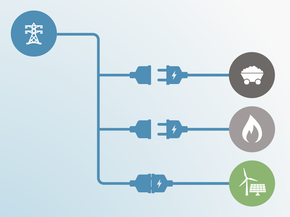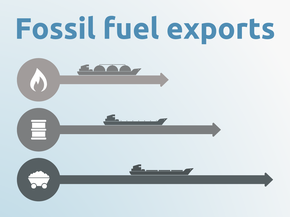Country summary
Overview
Japan's coal plant construction plans, which could add a possible 18 GW of coal power, remain a major concern. We project that coal could continue to supply a third of Japan’s electricity in 2030 without a further push for renewables, This level of coal is not consistent with the findings of the IPCC Special Report on 1.5oC, which shows that coal-fired power needs to be phased out by 2050 globally to keep warming below 1.5oC with limited or no overshoot. This also stands in contrast to the series of announcements from the financial sector since May 2015 to shift away from investing on coal power plants.
Referring to a streak of extreme weather events that hit Japan in 2018, Prime Minister Shinzo Abe urged in an article for the Financial Times that countries need to take “more robust action” on climate change. However, there are doubts about how serious he is about strengthening action in his own country. Japan’s new Basic Energy Plan was adopted in July 2018, but it provides no vision nor strategy on how Japan can go beyond its 22–24% by 2030 renewable electricity target, which is likely to be achieved with existing policies. Instead it focusses on whether new nuclear reactors could be constructed toward 2050 and how to reduce the economic costs resulting from the renewable electricity support scheme.
The Japanese government plans to prepare a long-term strategy by June 2019, ahead of the G20 summit in Japan, but two government ministries’ visions for this appear to be at odds: the Ministry of the Environment (MOEJ) focuses on how to achieve the 80% emissions reduction target by 2050 domestically, and emphasises a need for the early introduction of a fully-fledged carbon pricing scheme. In contrast, the Ministry of Economy, Trade and Industry (METI) emphasises the difficulty of achieving the 80% reduction domestically and focuses instead on Japan’s international contribution to global emissions reductions. The METI report is also critical about any introduction of a full-fledged, nation-wide carbon pricing in the near-term.
March 2017 also saw a last-minute rush of biomass project applications before the feed-in tariff rates were lowered. Total biomass capacity would reach 16 GW if all approved projects are implemented—more than double the amount expected under the 2030 electricity mix target. Many of the approved projects plan to co-fire imported palm oil with coal, raising concerns about the overall environmental integrity of Japan’s renewable energy policy.
One positive policy development since our previous assessment has been in the transport sector—the Government, together with all major car manufacturing companies, is planning to set a long-term target of reducing tank-to-wheel CO2 emissions by 90% below 2010 levels by 2050 for new passenger vehicles, assuming a near 100% share of electric vehicles.
Subnational and non-state actors are also becoming increasingly active—the Japan Climate Initiative was launched in October 2018 with nearly 300 member organisations to accelerate the transition toward decarbonisation.
Japan’s future emissions are challenging to predict, owing to uncertainty around the future role of nuclear, coal and renewable energy. Nevertheless, the Government’s current energy policy could bring its NDC target - of 26% below 2013 emission levels including LULUCF (18% below 1990 levels) by 2030 - within reach, highlighting the fact that its NDC target could be more ambitious. Implemented policies will lead to emissions levels of 10–15% below 1990 levels in 2030, excluding LULUCF. The also results indicate that under current policies, Japan will overachieve its 2020 pledge regardless of the future role of nuclear power.
Japan’s proposed Kyoto Protocol-like accounting of sinks (land use change and forestry) in its NDC reduces its effective target by about 3% below 1990 levels, resulting in a target of 15% below 1990, excl. LULUCF. We rate the target “Highly insufficient,” meaning that if all countries were to adopt this level of ambition, global warming would likely exceed 3–4oC in the 21st century. This is in stark contrast to Japan’s claim that its NDC is in line with a pathway consistent with the Paris Agreement’s long-term temperature goal.
Under our CAT analysis an “Insufficient” rating would require an emissions level of 975 MtCO2e/yr in 2030 or 23% below 1990 levels, a “2°C compatible” rating would require an emissions level of 204 MtCO2e/yr in 2030 or 76% below 1990 levels. This stands in stark contrast to Japan’s claim that the NDC is in line with a 2°C target.
Further analysis
Latest publications
Stay informed
Subscribe to our newsletter







